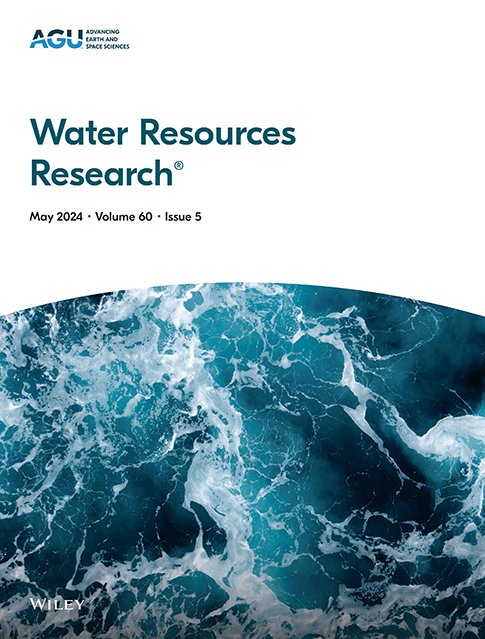Tidal Response of Groundwater in an Anisotropic Leaky Aquifer
IF 4.6
1区 地球科学
Q2 ENVIRONMENTAL SCIENCES
引用次数: 0
Abstract
Groundwater tidal response analysis is a valuable tool for monitoring leakage in groundwater systems, yet the interpretation of this response has often been incomplete. Notably, the impact of anisotropic aquifer permeability on tidal response has not been addressed in existing models. This study presents an analytical model to examine the effect of anisotropy on the tidal response of an aquifer overlain by a semi-confined aquitard with finite storage. After verifying our model against previous models and numerical simulations, we fund: (a) At high vertical aquifer conductivity and aquitard leakage, the amplitude ratio of the tidal response is small, and the phase shift is positive, making our solution closely align with the existing leaky aquifer model. (b) As the vertical aquifer conductivity decreases, the amplitude ratio increases and the phase shift decreases and becomes negative at relatively low leakage, similar to that of a confined aquifer. (c) When the vertical aquifer conductivity is smaller relative to the horizontal one, the existing leaky aquifer model tends to underestimate the amplitude and overestimate the phase shift. (d) The aquitard storage has a significant effect on the tidal response of the aquifer when the aquitard leakage is large, but a negligible impact when the vertical aquifer conductivity is small. Applying our model to field data from four monitoring wells in the North China Plain, we find that when the shale content in the aquifer reaches 40.09%, our anisotropic model more effectively fits the observed phase shift compared to the existing leaky aquifer model.各向异性渗漏含水层中地下水的潮汐响应
地下水潮汐响应分析是监测地下水系统渗漏的重要工具,但对这种响应的解释往往不完整。值得注意的是,在现有的模型中,各向异性含水层渗透率对潮汐响应的影响尚未得到解决。本文提出了一个分析模型来研究各向异性对有限蓄水半承压含水层的潮汐响应的影响。通过对已有模型和数值模拟的验证,我们发现:(a)在含水层垂直电导率和含水层渗漏较大的情况下,潮汐响应的幅值比较小,相移为正,使我们的解与现有的渗漏含水层模型非常接近。(b)随着含水层垂直电导率的减小,幅值比增大,相移减小,在较低渗漏时变为负值,与承压含水层相似。(c)当含水层垂直电导率小于水平电导率时,现有的渗流含水层模型往往会低估相移幅度,高估相移。(d)当含水层渗漏量较大时,含水层蓄水量对含水层潮汐响应有显著影响,但当含水层垂直电导率较小时,影响可以忽略不计。将该模型应用于华北平原4口监测井的现场数据,发现当含水层中页岩含量达到40.09%时,该各向异性模型比现有的泄漏含水层模型更能有效地拟合观测相移。
本文章由计算机程序翻译,如有差异,请以英文原文为准。
求助全文
约1分钟内获得全文
求助全文
来源期刊

Water Resources Research
环境科学-湖沼学
CiteScore
8.80
自引率
13.00%
发文量
599
审稿时长
3.5 months
期刊介绍:
Water Resources Research (WRR) is an interdisciplinary journal that focuses on hydrology and water resources. It publishes original research in the natural and social sciences of water. It emphasizes the role of water in the Earth system, including physical, chemical, biological, and ecological processes in water resources research and management, including social, policy, and public health implications. It encompasses observational, experimental, theoretical, analytical, numerical, and data-driven approaches that advance the science of water and its management. Submissions are evaluated for their novelty, accuracy, significance, and broader implications of the findings.
 求助内容:
求助内容: 应助结果提醒方式:
应助结果提醒方式:


